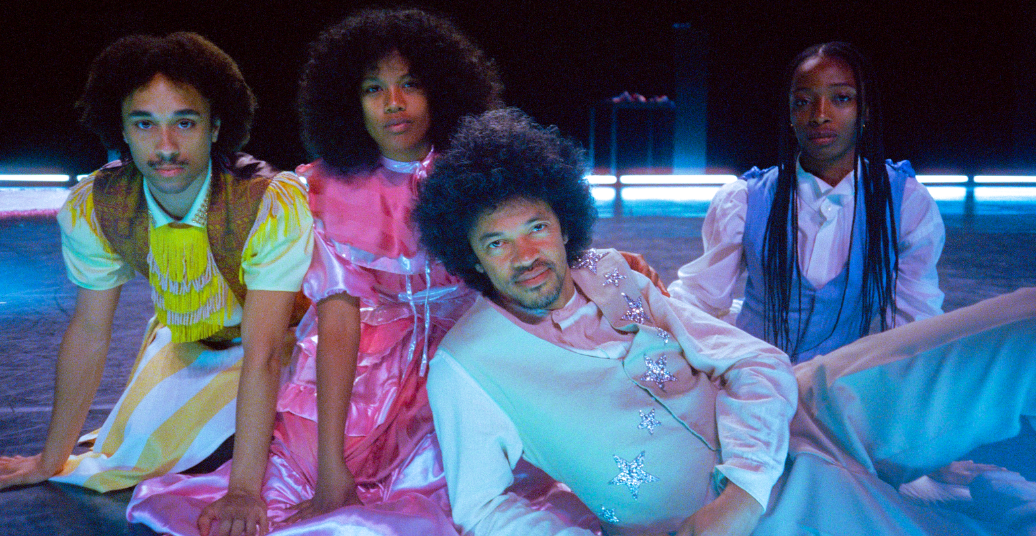Fampitaha, fampita, fampitàna, choreographed by Soa Ratsifandrihana, shows diasporic bodies as bearers of the past and protagonists of the present. The work was performed at HAU2 from 16 to 18 August 2024 as part of Tanz im August.
“I call on Haiti!” announces performer Stanley Ollivier into a microphone. At this, his fellow performer Audrey Merilus walks to the front of the stage, presenting herself like a pageant contestant for the audience’s consideration. “I call on Madagascar!” brings choreographer/performer Soa Ratsifandrihana and musician Joël Rabesolo to centre stage. Lastly, Ollivier answers his own call for Guadeloupe and Martinique. This brief call-and-response reveals not only the heritage of the four performers, but also that they are a mixture of first-, second-, and third-generation immigrants. So far, so simple: identities defined via multiple choice, a set of boxes to be ticked on a government form. Of course, as we find out, the reality is far more complex.
It would appear that we start off in colonial France. Dressed in petticoats or breeches, long white gloves, and sashes in the colours of the French tricolore, the dancers rise onto their toes and trace repetitive, symmetrical patterns through the space. Eventually the relentless elegance starts to feel stifling, and none of them seem particularly happy to be there. Yet there is a nostalgia to the music and a genuine embodiment of the movement which make me wonder if they are parodying the hypocrisy of baroque Versailles, or defiantly inserting themselves into that part of (what it surely also their) history.
The next scene brings to mind resistance and rebellion—dressed in Day-Glo shorts and knee-high silver boots, the dancers march and jump in grid formations with grim determination, anger even. However, alongside urgency, Rabesolo’s funk guitar also injects a sense of fun into the movement, and the militaristic structures are constantly disrupted by each dancer breaking step into bursts of virtuosity and joyfulness. They replicate the beat with rhythmical, looping movements in their chests or, grinning and whooping, attempt to outdo each other with the speed of their footwork. This undercuts any temptation I may have to view them as a homogeneous group—in fact, throughout the piece, the nuances and idiosyncrasies of each performer ensure that my focus remains on them as a collection of contradictory individuals. It would appear that the work is not about ‘the’ diasporic experience, as though it were something unified and global, but rather about diving into a few of the personal narratives which make up the varied whole.
As the wordplay of the title may suggest (“Fampitaha, fampita, fampitàna” translates from Malagasy as “Comparison, transmission, rivalry”), Ratsifandrihana also uses language especially effectively to make global narratives personal. In a classroom situation, asked to repeat tongue-twisters in English and French, a struggling Rabesolo eventually gives up, before insisting on his own tongue-twister in Malagasy. As he and Merilus (playing the role of stern teacher) begin to raise their voices, Indigenous language competing against colonial, it is funny until the stakes become clear—something is at risk of being lost. This is emphasised when Merilus, with her back to us, performs a touching solo to the sound of herself speaking Creole: as she says, “I speak the language to myself so I don’t forget it”. Both physically and linguistically, the performers are constantly being pulled in many directions, expected both to adapt and resist—with generosity, Fampitaha, fampita, fampitàna manages to convey something of the enormity of these multitudes.
Fampitaha, fampita, fampitàna by Soa Ratsifandrihana was performed at HAU2 from 16 to 18 August 2024 as part of Tanz im August.




